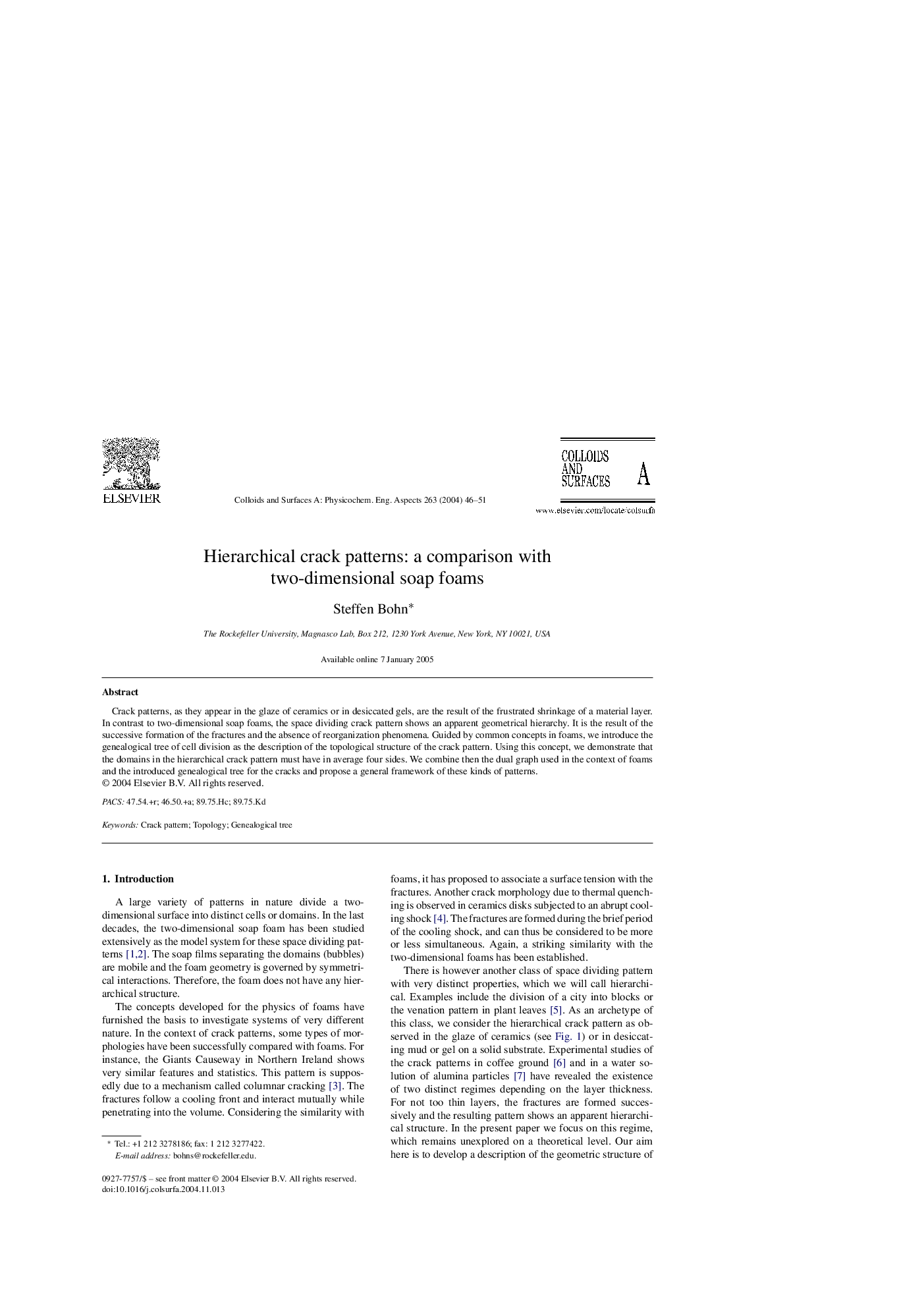| Article ID | Journal | Published Year | Pages | File Type |
|---|---|---|---|---|
| 9675746 | Colloids and Surfaces A: Physicochemical and Engineering Aspects | 2005 | 6 Pages |
Abstract
Crack patterns, as they appear in the glaze of ceramics or in desiccated gels, are the result of the frustrated shrinkage of a material layer. In contrast to two-dimensional soap foams, the space dividing crack pattern shows an apparent geometrical hierarchy. It is the result of the successive formation of the fractures and the absence of reorganization phenomena. Guided by common concepts in foams, we introduce the genealogical tree of cell division as the description of the topological structure of the crack pattern. Using this concept, we demonstrate that the domains in the hierarchical crack pattern must have in average four sides. We combine then the dual graph used in the context of foams and the introduced genealogical tree for the cracks and propose a general framework of these kinds of patterns.
Related Topics
Physical Sciences and Engineering
Chemical Engineering
Colloid and Surface Chemistry
Authors
Steffen Bohn,
